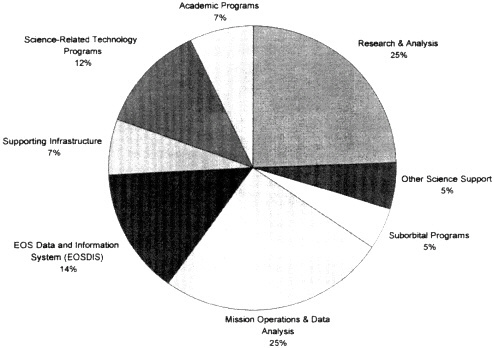B Overview Of Nasa Structure And Budget
For policy makers, budget analysts, recipients of research and data analysis (R&DA) grants, students, and interested analysts who may not be familiar with the overall structure and budget of the National Aeronautics and Space Administration (NASA), this appendix provides the broad agency context for the detailed discussions of R&DA in the report. Figure B.1 depicts the current organizational structure of NASA; Figure B.2 shows the distribution of the overall NASA budget for FY 1997; and Figure B.3 shows, more specifically, the budget for NASA science-related programs and activities broken down by the categories presented in the report (see Chapter 4, Box 4.1).
Research and Data Analysis (R&DA) activities are managed by the Office of Space Science, for the Space Science Enterprise; the Office of Earth Science, for the Earth Science Enterprise; and the Office of Life and Microgravity Sciences and Applications and the Office of Space Flight, for the Human Exploration and Development of Space Enterprise. Graduate student fellowships are administered by the Office of Human Resources and Education and the Equal Opportunities Programs. Aeronautical centers are administered by the Office of Aeronautics and Space Technology Transportation.






